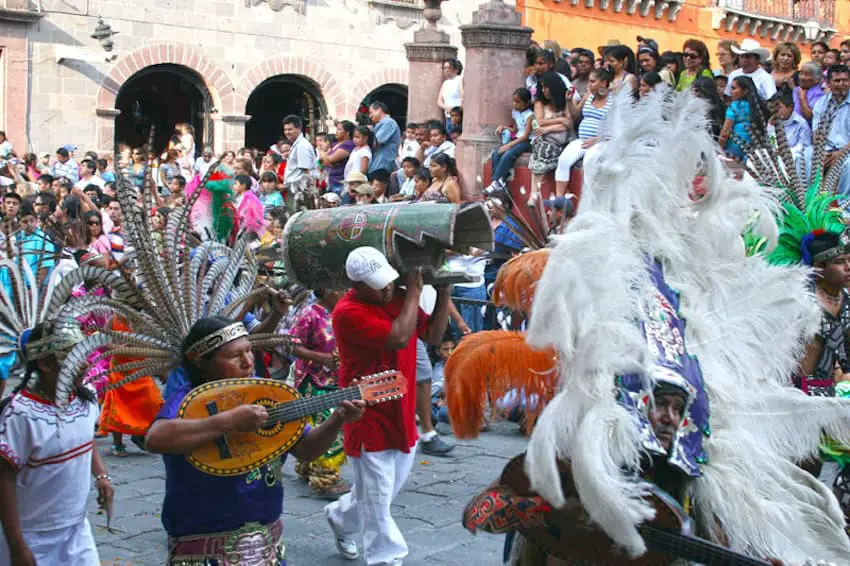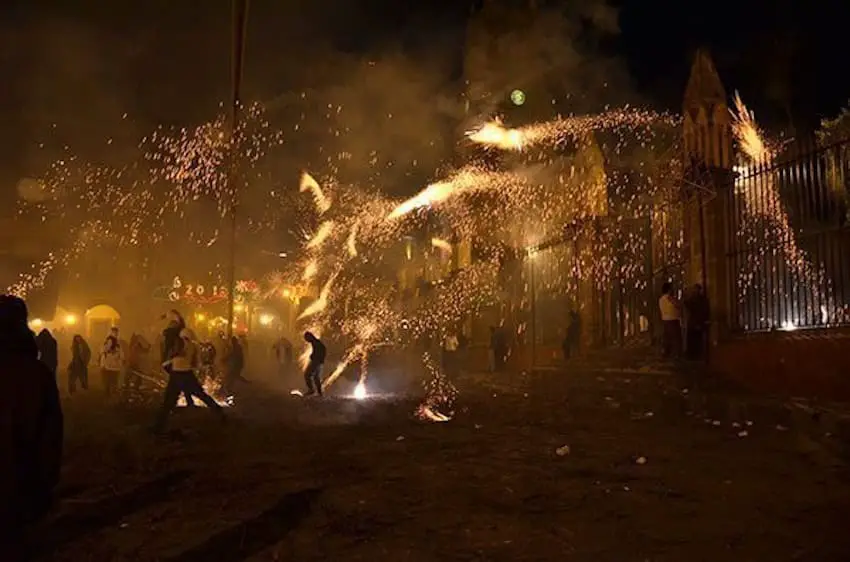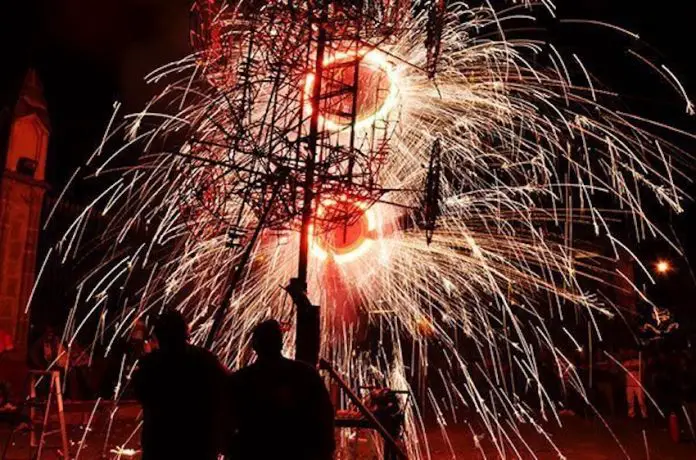Every year on the weekend closest to September 29th, San Miguel de Allende celebrates La Alborada, also known as Las Fiestas de San Miguel, honoring the city’s patron saint, Saint Michael the Archangel. This cherished, weekend-long tradition is deeply woven into San Miguel’s identity, with the main events happening at the Parroquia de San Miguel and the Jardín Allende in the city square.
In honor of the highest-ranking archangel, the community gathers in a shared expression of faith and gratitude. The origins of this tradition date back to colonial times, evolving over the centuries as a blend of Indigenous and Catholic beliefs. The modern version of La Alborada, as it is celebrated today, was revived in 1924 by the workers of the La Aurora textile factory.

At the core of La Alborada lies the symbolic reenactment of the celestial battle between Saint Michael the Archangel and Lucifer. This epic struggle, deeply rooted in the Catholic tradition, portrays Saint Michael as the divine warrior who leads the heavenly forces against the fallen angel Lucifer in a clash that symbolizes the fight between good and evil.
On Friday night, the neighborhoods of La Aurora, La Estación and Valle del Maíz become gathering spots for eager revelers. These celebrants carry enormous stars made from colorful paper and illuminated from within by candles that are a glowing homage to Our Lady of Light. At 1:00 a.m., all groups begin their spirited walk towards the Jardín, where crowds await with musical ensembles.
Once everyone has arrived, the city square becomes a theater of war, reflecting Saint Michael’s fiery determination to protect the faithful and drive back the forces of darkness. It is a luminous offering to please Saint Michael in hopes that he will grant blessings for the year ahead.
Attendees fortify themselves with a drink or two for courage. The Red Cross and fire trucks are parked all around on standby. In the dead of night, as the clock strikes 4:00 a.m., the church bells toll to mark the beginning of La Alborada.

Rockets start shooting from the church’s courtyard, tracing bright lines in the dark sky before exploding with a deafening bang. Most of these missiles are launched directly towards the thousands of people gathered in front of the church. There’s something primal about this religious fervor, driven by fire and thunder.
To symbolize the artillery of Satan, fireworks are launched from the opposite side of the Jardin toward the church. This turns the square into a dramatic battlefield where the crowds are caught in the crossfire. The sheer volume of this seemingly endless barrage is intense in this explosive showdown.
At 4:30 a.m., a castle joins Saint Michael’s arsenal. This tall wood or metal frame, built around a central pole, is covered in rockets. Some of these fireworks spin and shoot fire in all directions, while others are set off in stages, creating a display of shapes, patterns and colors. The crowd now jumps and dodges around it, avoiding the sparks flying from the structure. There are as many lights on the ground as there are in the sky. When all sides of the castle have burned out, the circular top ignites and begins to spin rapidly.
The smoke from the fireworks grows so thick that it becomes its own challenge, creating a dark atmosphere where the biggest concern isn’t just the low visibility or the fire raining down, but the lack of oxygen. The thick smoke lingers amidst the massive colonial buildings, adding to this chaotic, heart-pounding experience.

By 5:30 a.m., the barrage of fireworks finally stops. Good has triumphed. Saint Michael has defeated the forces of darkness, and the crowd erupts in applause, celebrating the good news: a prosperous year full of blessings is promised for all. This high-energy revelry culminates in the singing of “Las Mañanitas.”
On Sunday, the celebrations continue for those who have the stamina to keep up with the pace. People gather again for a captivating performance by the Voladores de Papantla, whose aerial dance show dazzles the crowd as they spin gracefully from great heights. Traditional dancers in Indigenous attire bring beautiful floral offerings. Adding a whimsical touch, giant puppets called mojigangas dance their way through the streets.
The burning of paper-mâché figures captivates children. When the figures explode, kids dive to the ground like it’s a piñata party, scrambling to grab the hidden goodies. Meanwhile, hundreds of riders fill the street in front of the Parroquia, where a temporary altar is set up for a special mass and the blessing of the horses. A solemn procession carries the image of Saint Michael through the town, pausing at key churches before finally returning to its home parish.
As La Alborada approaches, consider yourself warned: this is not a quiet night in San Miguel de Allende. For daredevils, diving straight into the action at the city square can be the ultimate adrenaline rush. It’s a chance to participate in joyful chaos and stand shoulder-to-shoulder with locals and fellow thrill-seekers.
However, for those who prefer to keep a safe distance, taking a few precautions might be wise. Consider snuggling your pets in a pillow bunker and slipping on an extra pair of earplugs. The sheer volume of pyrotechnics means thick smoke can settle over the city, making breathing a challenge, especially in the Historic Center. On the bright side, if you manage to sleep that night, you’ve earned bragging rights!
Whether you’re in the thick of it or watching from afar, La Alborada is not for the faint of heart — but it’s certainly a night to remember.
Sandra Gancz Kahan is a Mexican writer and translator based in San Miguel de Allende who specializes in mental health and humanitarian aid. She believes in the power of language to foster compassion and understanding across cultures. She can be reached at: sandragancz@gmail.com
